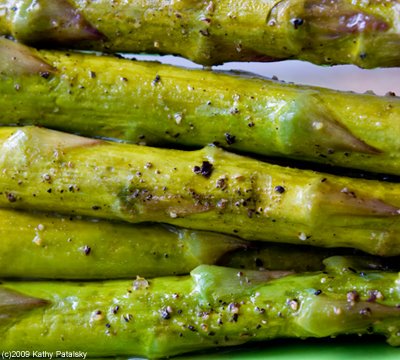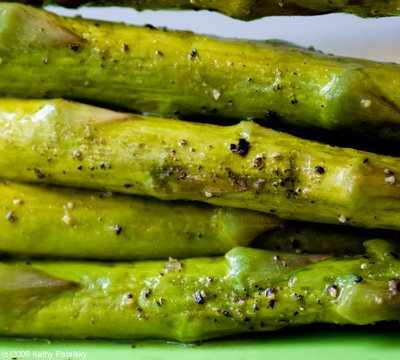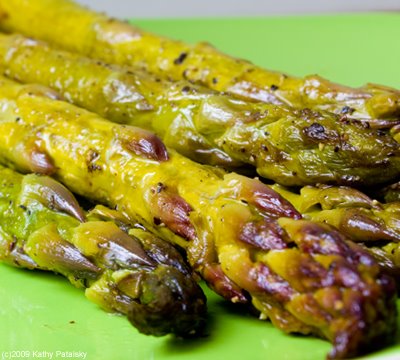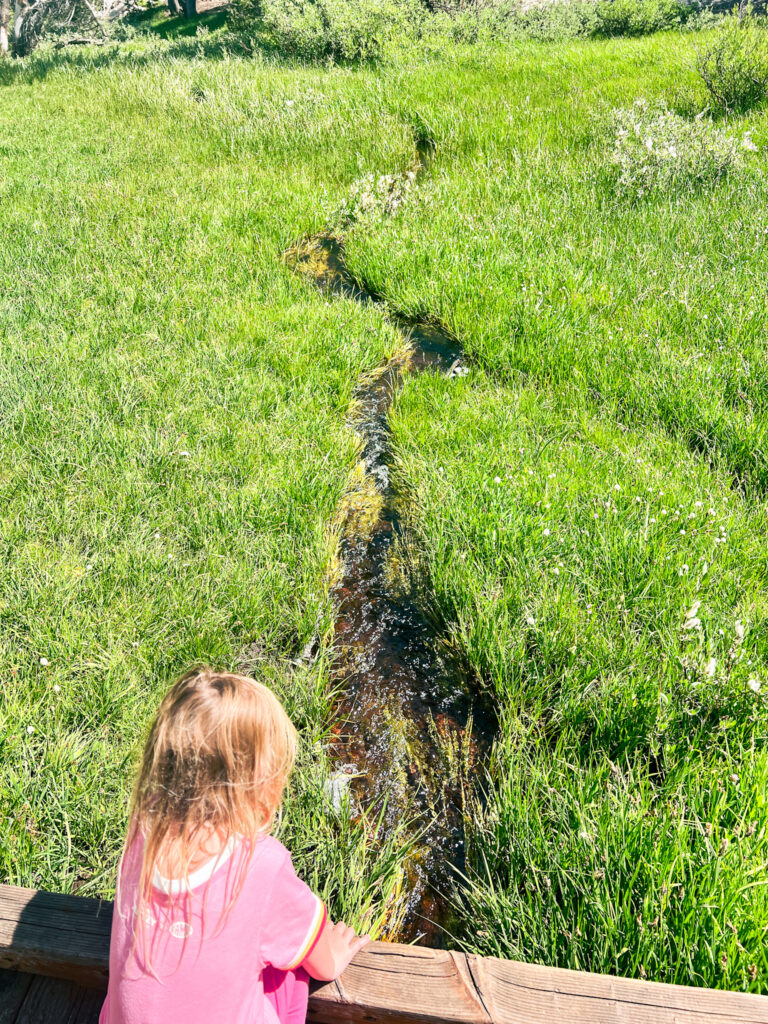
Asparagus Facts. Did you know that asparagus is a member of the lily family? I guess my flower comparison was valid! And FYI, also in the lily family are leeks, garlic and onions. And did you know that asparagus comes in a variety of colors, the most exotic being the white asparagus. And this is amazing: an asparagus can grow 10" in 24 hours, under ideal conditions!
Questions about Asparagus.
Can asparagus be eaten raw? Apparently, yes. Although I wouldn't recommend it on a taste value level. Maybe a very thin slice could be yummy if marinaded with oil and balsamic vinegar. Hmm...
How do I cook asparagus? You can steam, fry, saute, boil, bake or roast asparagus. You can also grill it. Grilled asparagus is an amazing summer treat. Add a squeeze of lemon and a pinch of s and p and you are in grilled green spear bliss.
What are some good asparagus flavor accents? Lemon and garlic are excellent flavors to add to an asparagus saute. Any vinegar or acid will help break down the thick asparagus stalk flesh. This makes for a more tender bite. Asparagus also goes will with spicy chilies, along side white vegan cheese in an asparagus melt sandwich, or even on top of a colorful vegetable pizza. Just be careful not to overcook your spears. No one likes mushy asparagus, no matter how you flavor it!
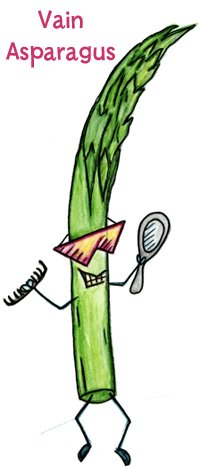
And here are the nutrition facts for asparagus...
Nutrients in Asparagus. Asparagus spears are high in Folic Acid and is a good source of potassium, fiber, vitamin B6, vitamins A and C, and thiamin.
Asparagus Nutrition Facts:
Serving size: 5 ounces, around 6 spears
Calories: 20
Protein: 3 grams
Carbohydrate: 3 grams
Fat: 0 grams
Vitamin A: 8% RDA
Vitamin C: 20% RDA
Thiamin: 15% RDA
Riboflavin: 6% RDA
Niacin: 6% RDA
Calcium: 2% RDA
Potassium: 400 milligrams
Dietary Fiber: 3 grams
Vitamin B6: 10% RDA
Folacin: 60% RDA
Magnesium: 4% RDA
Copper: 4% RDA
A great resource on asparagus:
http://www.asparagus.org/maab/faq.html
or complete asparagus nutrition facts click here.


